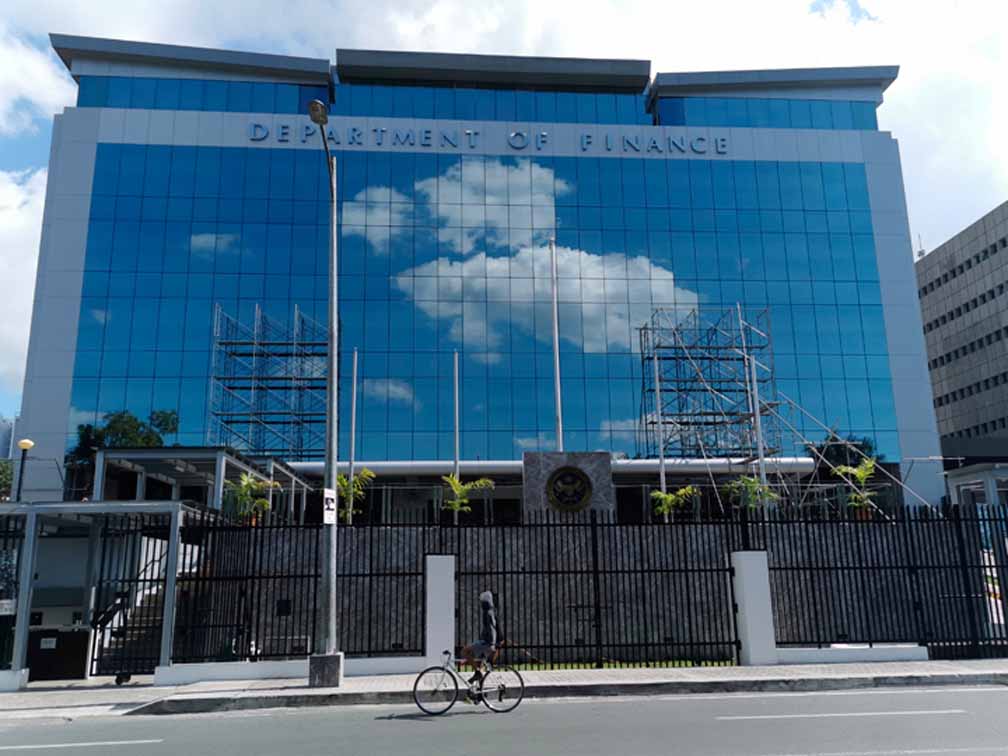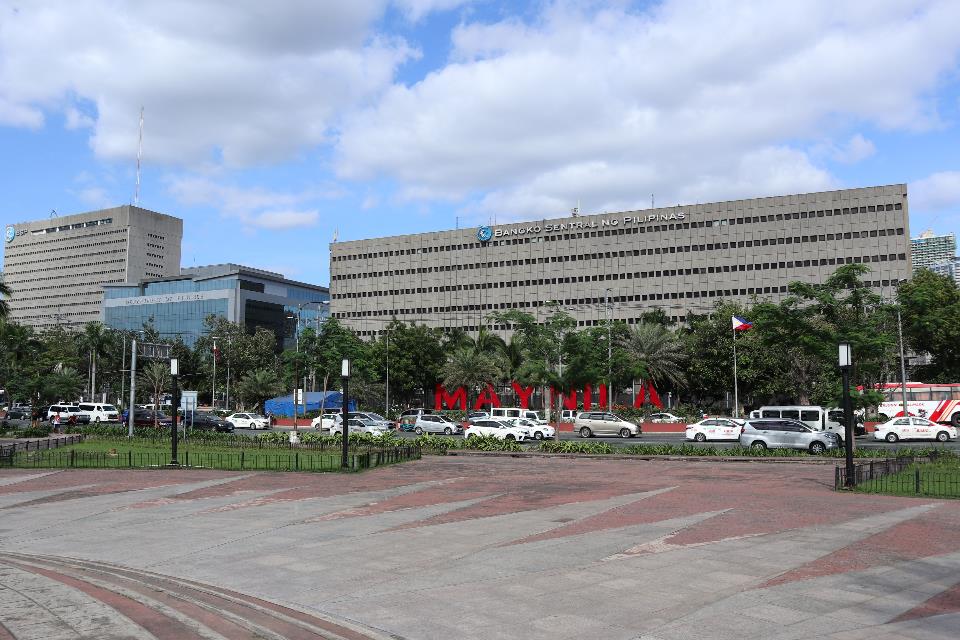By Sophia Mercado/ACB
How will you make sure that everyone—from policy-makers and business leaders to their employees, and even school children—are aware of and practice biodiversity conservation in their daily activities?
This is the challenging mission of Dr. Theresa Mundita S. Lim, international wildlife expert and executive director of the Asean Centre for Biodiversity (ACB).
Growing up with accounts from her mother about how the forests of Sierra Madre, the longest mountain range in the Philippines, saved people’s lives during World War II by providing food and shelter, Lim developed her love for nature as she learned about how barks of trees can be turned into blankets and wild plants can ease the hunger of people in hiding.
The wild animals she encountered during her practicum in Calauit, Palawan, as a veterinary medicine student at the University of the Philippines further inspired her fascination with fauna. After seeing baby marine turtles, she decided to work on them for her thesis, which involved isolation of fungus that infects the said animals.
Lim’s study on the marine turtles launched her career in wildlife conservation with the Philippines’s Department of Environment and Natural Resources (DENR), where she started with the marine turtle program. The rest is continuing history of her work and contribution to conservation.
In her more than one and a half decades as director of the Biodiversity Management Bureau (BMB), formerly the Protected Areas and Wildlife Bureau of the DENR, Lim guided national directions on protected areas and wildlife conservation.
She closely worked with the Philippine Congress on the legislative priorities for conservation and sustainable management of biodiversity in the country. Among her notable achievements were the development of the Expanded National Integrated Protected Areas System bill that became a law, the National Ecotourism Strategy, and the Philippine Biodiversity Strategy and Action Plan.
She was also recognized by Environment Secretary Roy Cimatu as instrumental in increasing government budget for biodiversity conservation to as much as 70 percent in the last six years.
As director of ACB, assuming a leadership role that involves multiple countries is not new for Lim.
She has taken on various international functions, such as chairman of the Convention on Biological Diversity (CBD) Subsidiary Body on Scientific, Technical and Technological Advice, which provides the Conference of the Parties to the CBD with timely advice relating to the implementation of the convention.
She was chairman of the 15th and 18th Meetings of the Asean Working Group Meeting on Coastal and Marine Environment, which serves as a consultative forum to promote coordination and collaboration among various relevant Asean and other regional marine-related initiatives to ensure a well-coordinated and integrated approach to the conservation and sustainable management of the coastal and marine environment.
Lim was the chairman of the 4th Asean Experts Group on the Convention on International Trade in Endangered Species of Wild Flora and Fauna Meeting; chairman of the 16th Asean Working Group on Nature Conservation and Biodiversity, which provides technical guidance and enhances cooperation among Asean member-states in the promotion of conservation of nature and biodiversity; and chairman of the Asean Wildlife Enforcement Network.
Biodiversity 101
Lim believes that biodiversity and human lives are interconnected.
“Biodiversity is an inseparable part of human life. It provides us with food, air and water; materials for clothing and shelter; ingredients for medicines; protection from climate change; materials for business, industries and infrastructure; source of income from agriculture, fisheries, tourism and other livelihood for millions of poor all over the world; and even inspiration for arts and culture. “Lose biodiversity and you lose all these,” she explained.
She added that for wildlife, diseases are always connected to the condition of the ecosystem. This she learned from her wildlife management and disease post graduate course in the United Kingdom during her early days with the DENR.
“From that course I realized as a veterinarian that you don’t just treat—you manage the habitat. You protect the ecosystem where the wildlife thrives,” she noted.
Lim observed during her field work in other countries how the occurrence of emerging diseases is the same then and now.
“In Europe, there used to be a Scottish wolf that was extirpated by the people, not realizing that these wolves control the population of the red deer. This led to the overpopulation of the red deer, which carried the tick that also transmitted the deadly Lyme disease to humans.
“Now, we have the Avian influenza, the Ebola virus. It happened before, it’s still happening now with other diseases. This shows that increased human impact, such as eradicating certain predators, can lead to diseases.”
Integrating biodiversity conservation in development sectors
Since taking her oath as ACB’s leader in April 2018, Lim has advocated the linkage of biodiversity with development sectors—such as health, agriculture, banking and finance, infrastructure, climate change and tourism through a series of international workshops and meetings.
These activities identified action points for the convergence of each sector with biodiversity toward integrating or mainstreaming conservation in sectoral plans and processes.
The challenge in mainstreaming, she said, is reaching out to other sectors. “Explaining to them the importance of biodiversity—how do you start catching their attention? How and why will they listen to you? What would interest them?”
Lim learned that it is important to “use their language” in discussing with the sectors. “You do not talk about biodiversity, but about wild relatives of commercially important crops, nature-based tourism, traditional medicine and terminologies that would resonate more to the sector you want to engage.”
Besides the key sectors mentioned, Lim also saw opportunities for mainstreaming in other nontraditional areas. As wife of a military officer, she observed that conservation can be incorporated in national defense through their civil relations programs.
“Conservation can be mainstreamed through rehabilitation activities, such as tree-planting,” she added.
“In civil aviation, modernization of airports need bird-control measures. Infrastructure planners should be mindful that the Philippines is a migratory pathway. Airport modernization entails risks to the environment, so how do you minimize that risk? How do you reduce that risk without necessarily affecting the population of migratory birds? We need to have science-based measures for this.”
Understanding and working through biodiversity threats and challenges
According to Lim, the three most important biodiversity issues that Asean member-states need to prioritize are (in no particular order) marine pollution, people’s lack of knowledge and education on biodiversity, and lack of research.
“When I was still with the DENR, we rescued turtles with plastics and trash in their stomachs. Today, we still see similar news, including the islands of trash in the ocean. This is a problem that needs constant and persistent efforts.”
Another important concern, according to Lim, is enhancing knowledge and education about biodiversity, and helping people understand that the natural ecosystem can address current and major global issues like climate change and poverty.
“If you protect your biodiversity, you can contribute to climate-change adaptation; you can contribute to livelihood development. Lack of knowledge on biodiversity within the development sector can jeopardize the environment,” she explained.
“Biodiversity research, meanwhile, is a constant necessity because you cannot love and conserve what you do not know. You need to have an inventory of what is in nature and understand them. What is the importance of certain species?
“Research will be able to provide you answer. There are certain plants or animals that are sources of substances that can cure illnesses. If you are not able to understand them, then you cannot harness their full potential,” Lim said.
“But that should not stop with research. Just like in any field, you need to communicate new knowledge. People need to understand what biodiversity is as a sector, and its relation to their daily lives. You need to establish the science so that you can better communicate it,” she explained.
Coexistence of biodiversity and development
“Basically, biodiversity and development should not be viewed as separate from each other. It’s not biodiversity or development, it is biodiversity and development,” Lim emphasized.
When it comes to making decisions on technologies that make use of natural resources, Lim believes in always having the best scientific information at hand.
“The important thing is maximizing what is available in nature. That is why research is very important. Taxonomy, for example, is a field that can help in further understanding what’s in our environment,” she added.
“We need strong scientists, and we need strong communicators too. Convening a scientific forum is an opportunity to help facilitate discussion at the scientific level, but it should not end there.
“Eventually, we need to convince the communications people to help us convey the outcome of that forum, and then eventually translate the outcome into policy. That is the important connection to be made—establishing the science, communicating it, translating it to policy and realizing it in the community,” Lim said.
Balance: Key to a healthy environment and personal life
With all her achievements, Lim, who grew up from a close-knit family, is quick to attribute a huge part of her success to her kin and staff.
Her mother, who loves to grow lush greenery in their backyard, is particularly a major influence on her love for nature. From her father, she learned discipline and other important family life lessons.
“Support from my family is really a huge help. With my husband in the military and assigned elsewhere, and I was in the field back then, I would ask for help from my siblings, my mother, and even mother-in-law in taking care of my children. Come to think of it, I don’t think I could have survived my work if it were not for them,” said the wildlife expert.
Her advice for young ones who would like to take a similar path as hers: “You should walk your talk, lead by example and pray, because there are crossroads and decisions to be made, and there are things out of your control. You also have to choose your battles, because when you think about all the problems in the environment, you can get overwhelmed.”
“Start from yourself. Don’t think that because you are alone, you will only have a small impact. Just imagine if you start from one, and then expand—take it one step at a time. Work with others, because you can only do so much alone. Through working with partners, there will be multiplier effects with your work.”
Recently, flora and a fauna species were named after Lim. The Kurodaia (Conciella) theresamunditae, which is a louse species found in the Philippine scops owl; and the Medinilla theresae, an edaphic-endemic species of a terrestrial, erect, cauliflorous shrub in Dinagat and Mindanao Islands in the Philippines.
Image credits: Desiree Eve Maaño

































